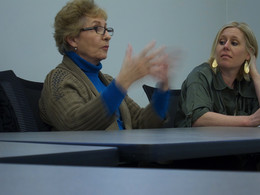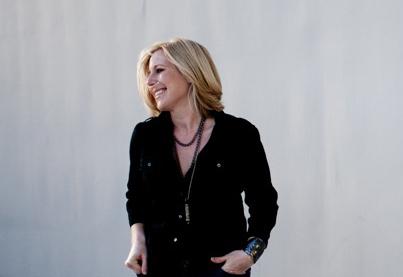Here's the recap from our discussion:
Thank you for joining our engaging discussion on VS Ramachandran’s The neurons that shaped civilization. As a follow up to our conversation about the brain and cognitive function, we've put together a list of resources for further exploration.
Medicine/Healing
National Center for Complementary and Alternative Medicine- NIH
Ayurvedic medicine (also called Ayurveda) is one of the world's oldest medical systems. It originated in India and has evolved there over thousands of years. In the United States, Ayurvedic medicine is considered complementary and alternative medicine (CAM)—more specifically, a CAM whole medical system. Complementary and alternative medicine is a group of diverse medical and health care systems, practices, and products that are not presently considered to be part of conventional medicine.
Complementary medicine is used together with conventional medicine, and alternative medicine is used in place of conventional medicine. A whole medical system is a complete system of theory and practice that has evolved over time in different cultures and apart from conventional medicine. Examples of whole medical systems include traditional Chinese medicine, Ayurvedic medicine, homeopathy, and naturopathy. Many therapies used in Ayurvedic medicine are also used on their own as CAM—for example, herbs, and specialized diets.’
· What’s your dosha?
Voodoo Healing
In voodoo, disease is regarded as totally spiritual. Therefore, treatment is entirely spiritual, as well.
Placebo Effect Works Even When Patients Know Medicine is Just `Sugar Pill', December 22, 2010, Bloomberg
The placebo effect, an improvement in health that occurs when a clinical trial patient is given a dummy pill, works even when the patient knows the medicine is fake, according to a Harvard study.
Brain
Somatosensory system
At its simplest, the system works when activity in a sensory neuron is triggered by a specific stimulus such as heat; this signal eventually passes to an area in the brain uniquely attributed to that area on the body—this allows the processed stimulus to be felt at the correct location. The point-to-point mapping of the body surfaces in the brain is called a homunculus and is essential in the creation of a body image. This brain-surface ("cortical") map is not immutable, however. Dramatic shifts can occur in response to stroke or injury.
Corpus callosum
The corpus callosum, also known as the colossal commissure, is a wide, flat bundle of neural fibers beneath the cortex in the eutherian brain at the longitudinal fissure. It connects the left and right cerebral hemispheres and facilitates interhemispheric communication.
Everyday fantasia: The world of synesthesia, American Psychological Association, Monitor on Psychology, March 2001
“…Some synesthetes hear, smell, taste or feel pain in color. Others taste shapes, and still others perceive written digits, letters and words in color. Some, who possess what researchers call "conceptual synesthesia," see abstract concepts, such as units of time or mathematical operations, as shapes projected either internally or in the space around them.”
Do People Only Use 10 Percent Of Their Brains? February 7, 2008, Scientific American
“…adding to that mystery is the contention that humans "only" employ 10 percent of their brain. If only regular folk could tap that other 90 percent, they too could become savants who remember π to the twenty-thousandth decimal place or perhaps even have telekinetic powers.”
Limitless- Bradley Cooper, Robert DeNiro, March 2011
“A copywriter discovers a top-secret drug which bestows him with super human abilities.”
Surgeons removed half her brain to save her life, Today Show, January 31, 2011
No Right Brain Left Behind
No Right Brain Left Behind is a speed innovation challenge, calling on the creative industries to concept ideas that can help the creativity crisis happening in U.S. schools today.
No right brain left behind: Must kids prep for 'risk-taking'? USA Today, July 13, 2009
"It worries me that we're not thinking big enough, that we're not preparing our kids for a world that will be terribly different from the one we grew up in," says Patrick Bassett, scanning the rapt faces of a few dozen parents in the auditorium of 103-year-old Mission High School, whose alums include poet Maya Angelou and rocker Carlos Santana.
SMU-led research center aims to connect brain signals to robotic limbs, September 8, 2010
Lightning-fast connections between robotic limbs and the human brain may be within reach for injured soldiers and other amputees with the establishment of a multimillion-dollar research center led by SMU engineers.
Related TED Talks
Jill Bolte Taylor's stroke of insight
Jill Bolte Taylor got a research opportunity few brain scientists would wish for: She had a massive stroke, and watched as her brain functions -- motion, speech, self-awareness -- shut down one by one. An astonishing story.
VS Ramachandran on your mind
Vilayanur Ramachandran tells us what brain damage can reveal about the connection between celebral tissue and the mind, using three startling delusions as examples.
Related Books
The Tell-Tale Brain: A Neuroscientist's Quest for What Makes Us Human, V.S. Ramachandran, 2011
The twentieth was the century of physics, with the grand unified theory its quest and goal. The twenty-first is shaping up as the century of neuroscience, with its quest and goal the reaffirmation of human exceptionalism. Boldly asserting, right off the bat, that Homo sapiens is “no mere ape,” Ramachandran tells us why the day of neuroscience has dawned. Always careful to point out when he is speculating rather than announcing research findings, he is also prompt to emphasize why his speculations, or theories, are not just of the armchair variety but can be put to the test because of what neuroscience has already discovered about the active structures of the human brain.
A Brief Tour of Human Consciousness: From Impostor Poodles to Purple Numbers, V.S. Ramachandran, 2005
What does an amputee who still feels a phantom limb have in common with an avant-garde artist, or a schizophrenic who claims to be controlled by alien implants, or an autistic child who can draw a hyper-realistic horse? According to neuroscientist Ramachandran (coauthor, Phantoms in the Brain), named by Newsweek one of the 100 people to watch in the 21st century, the answer lies deep in the physical structures of the brain, and his new book offers a thought-provoking survey of his area of research. Through examples, anecdotes and conjecture, Ramachandran aims "to make neuroscience... more accessible to a broad audience."
The Emerging Mind: The BBC Reith Lectures 2003, V.S. Ramachandran, 2003
This is a scintillating introduction to the latest thinking on the brain and the mind by the world's leading expert. Neuroscience can now begin to unlock the key to the self. Our knowledge of the brain has progressed so rapidly that it will change the way we think of ourselves as human beings.
Phantoms in the Brain: Probing the Mysteries of the Human Mind, V.S. Ramachandran, 1999
In these unsettling tales from a neuroscientist every bit as quirky as the more famous Oliver Sacks, Ramachandran sets out his beliefs that no matter how bizarre the case, empirical, strikingly simple testing can illuminate the ways brain circuitry establishes "self." In a chatty, nearly avuncular style, he (along with his coauthor, a New York Times science writer) snatches territory from philosophers on how we think we know what we know.
The Art of Happiness, 10th Anniversary Edition: A Handbook for Living, Dalai Lama and Howard C. Cutler, M.D., 2009
Have you ever wondered what it would be like to sit down with the Dalai Lama and really press him about life's persistent questions? Why are so many people unhappy? How can I abjure loneliness? How can we reduce conflict? Is romantic love true love? Why do we suffer? How should we deal with unfairness and anger? How do you handle the death of a loved one? These are the conundrums that psychiatrist Howard Cutler poses to the Dalai Lama during an extended period of interviews in The Art of Happiness: A Handbook for Living.
We look forward to seeing you at future TEDxSMU Tuesday events! Click here to register for another event. If you’d like to watch and discuss a favorite TEDTalk, let us know!
Join the TEDxSMU & Lockheed Martin Skunk Works® Lab teams for a weekly brown bag lunch series to watch a TEDTalk from the TED archives and have a lively discussion. Members of the SMU and Dallas communities are welcome to join; please RSVP.
Parking information available at http://www.tedxsmu.org/events/
Caruth Hall Skunk Works Lab, First Floor
3145 Dyer St.
Dallas, 75205
United States
- Event type:
- University (What is this?)

